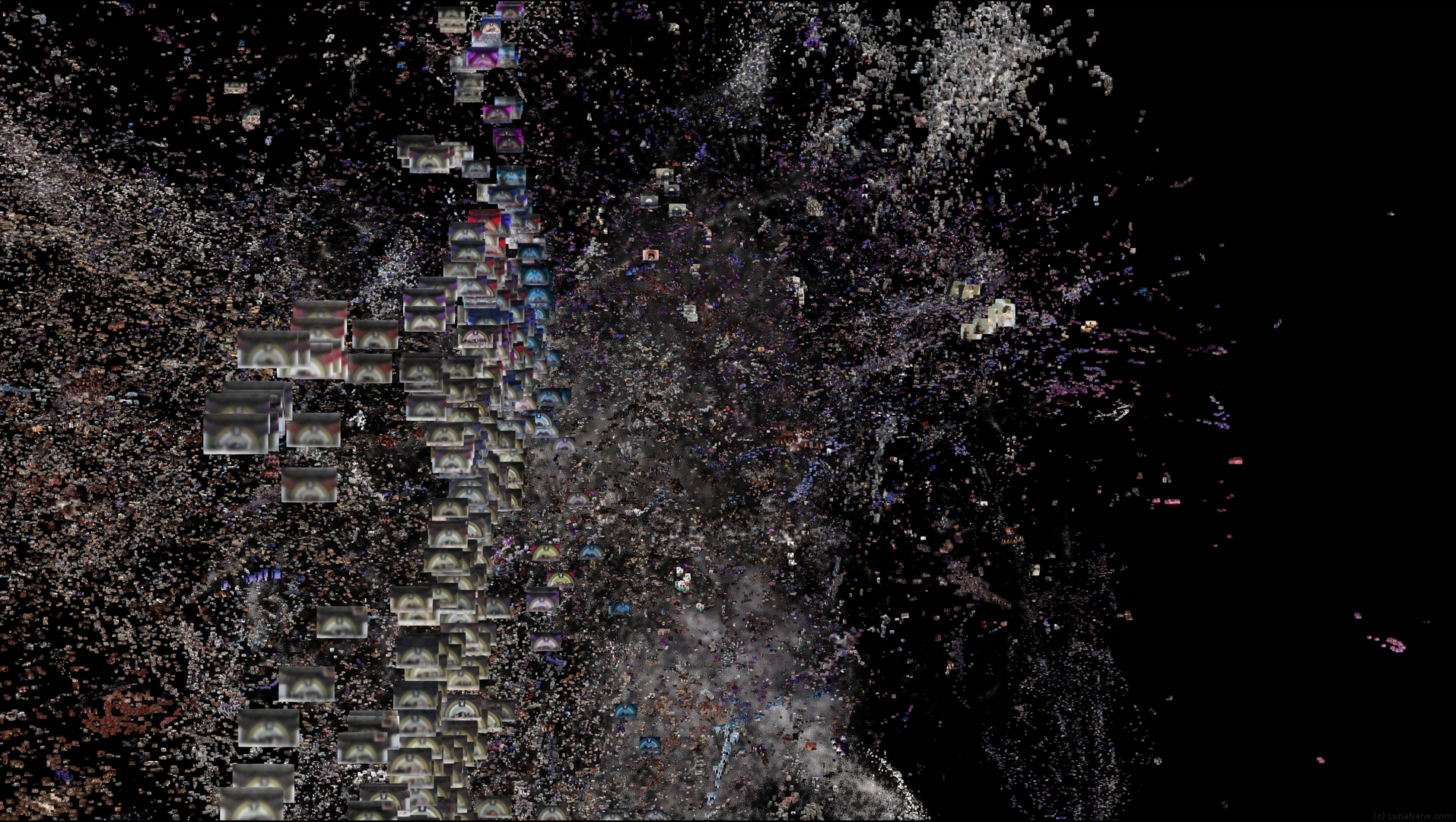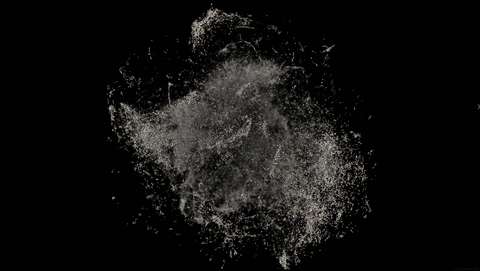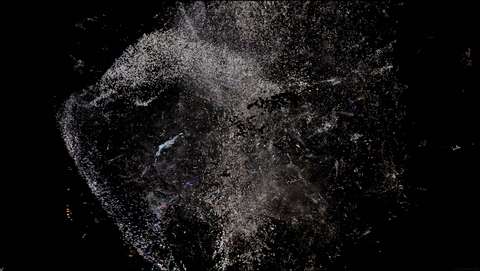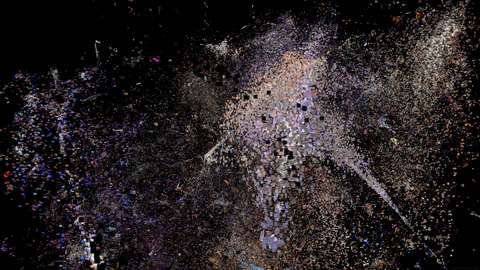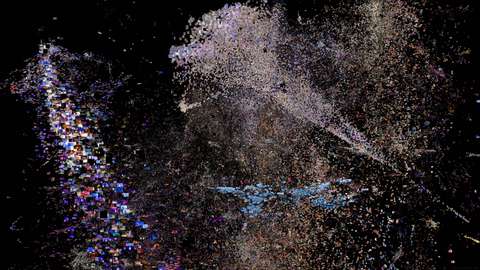Image Cloud of LA Phil Archive
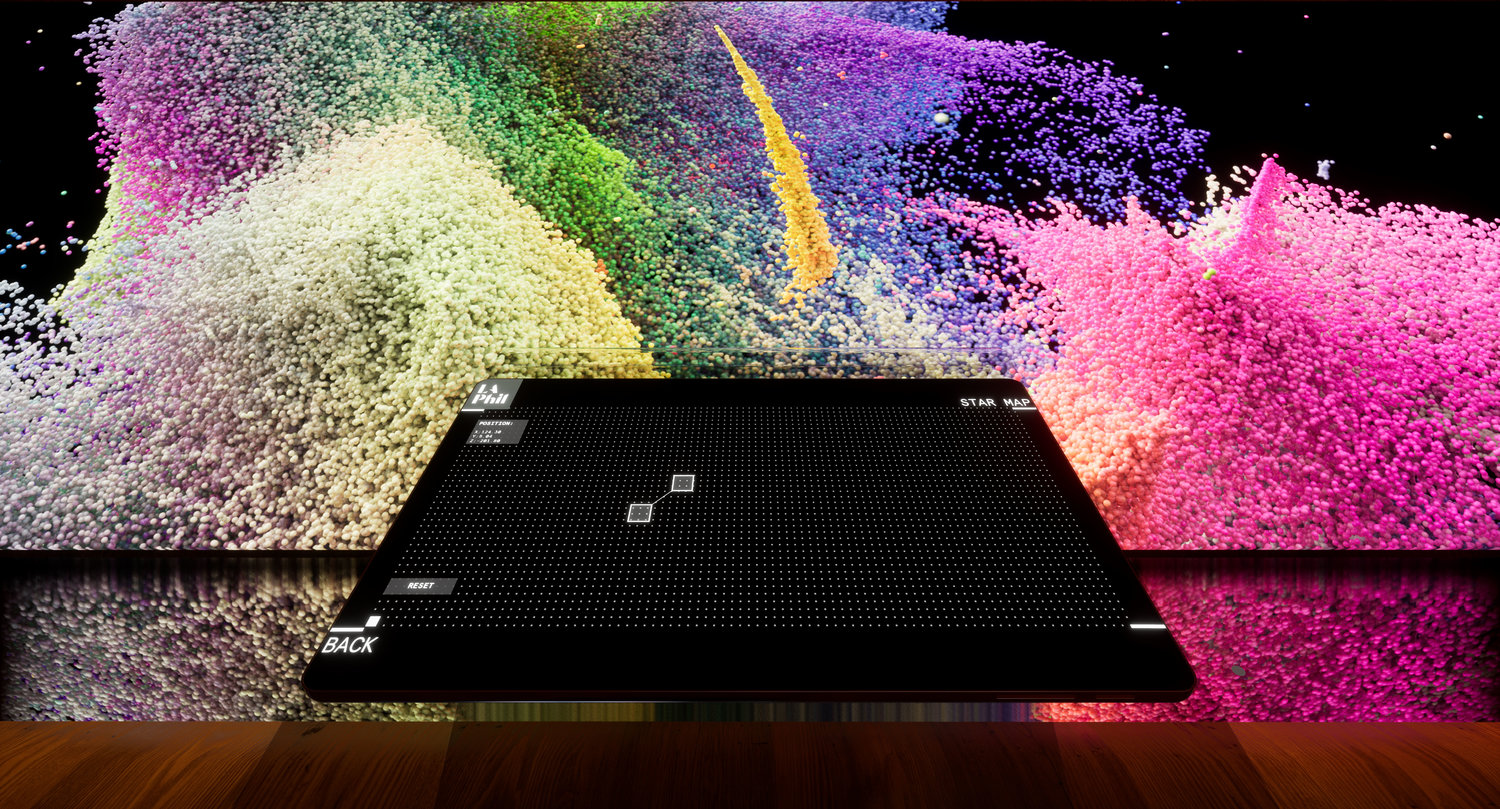
Another amazing collaboration with Refik Anadol. We had the chance to install a permanent exhibition in the famous Los Angles Philharmonic.
This project was so detailed and deep that its hard to sum up everything, so I decided to break it up into several posts and focus on my tasks (there where many other people doing intense work for this artwork).
The installation is a nicely wooden exhibition room with a 4 meter wide wall that is back projected by a powerful laser projector.
The users can explore the depths of the LA Phil image and sound archive on a tablet device.

Like back then in Archive Dreaming an AI algorithm sorted the archive content and I was provided with all the data to create a real-time 3d data-cloud from it.
Since the base for this was worked out already in Archive Dreaming, I could this time spent much energy on optimizing the visual quality and loading speed of the image cloud.
I realy loved to work with the colorful content here. You easily get lost in it during testing.
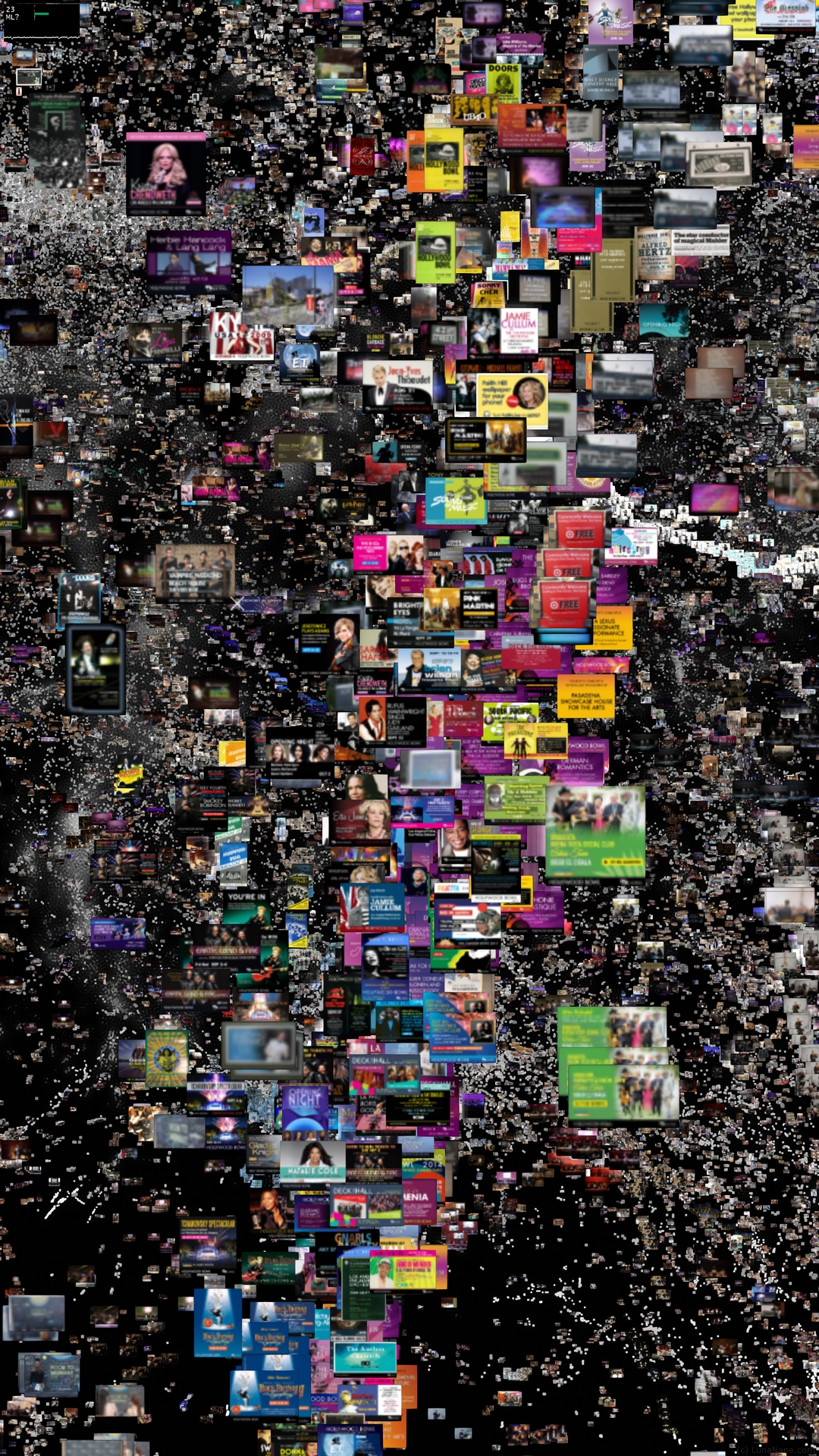
Improving image cloud visualization
Disclaimer: tech stuff ahead.
When working with large image clouds, I realized that one problem that comes up first is that it could just look like a dense pixel soup. Many images are overlapping and forming a dense screen of colored pixels that you can not differentiate visually. So you easily loose the sense for the topology of the cloud.
Bright Ambient Occlusion
I figured out that it helps immensely when you apply a specialized form of ambient occlusion. An AO basically, that doesn't make the background of an object darker but brighter.
Here are some comparison images without and with bright ambient occlusion from different distances:
Near Distance
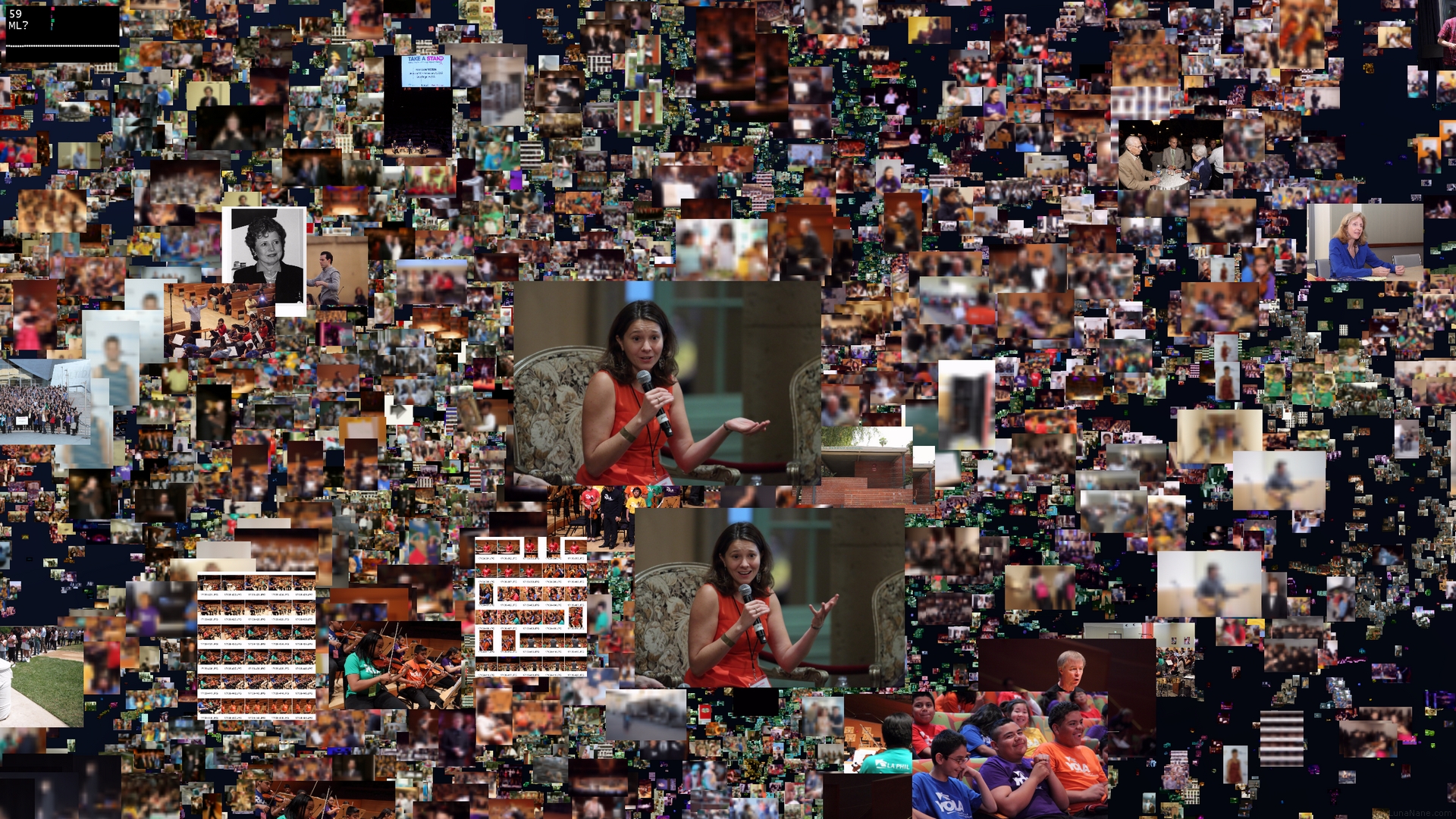
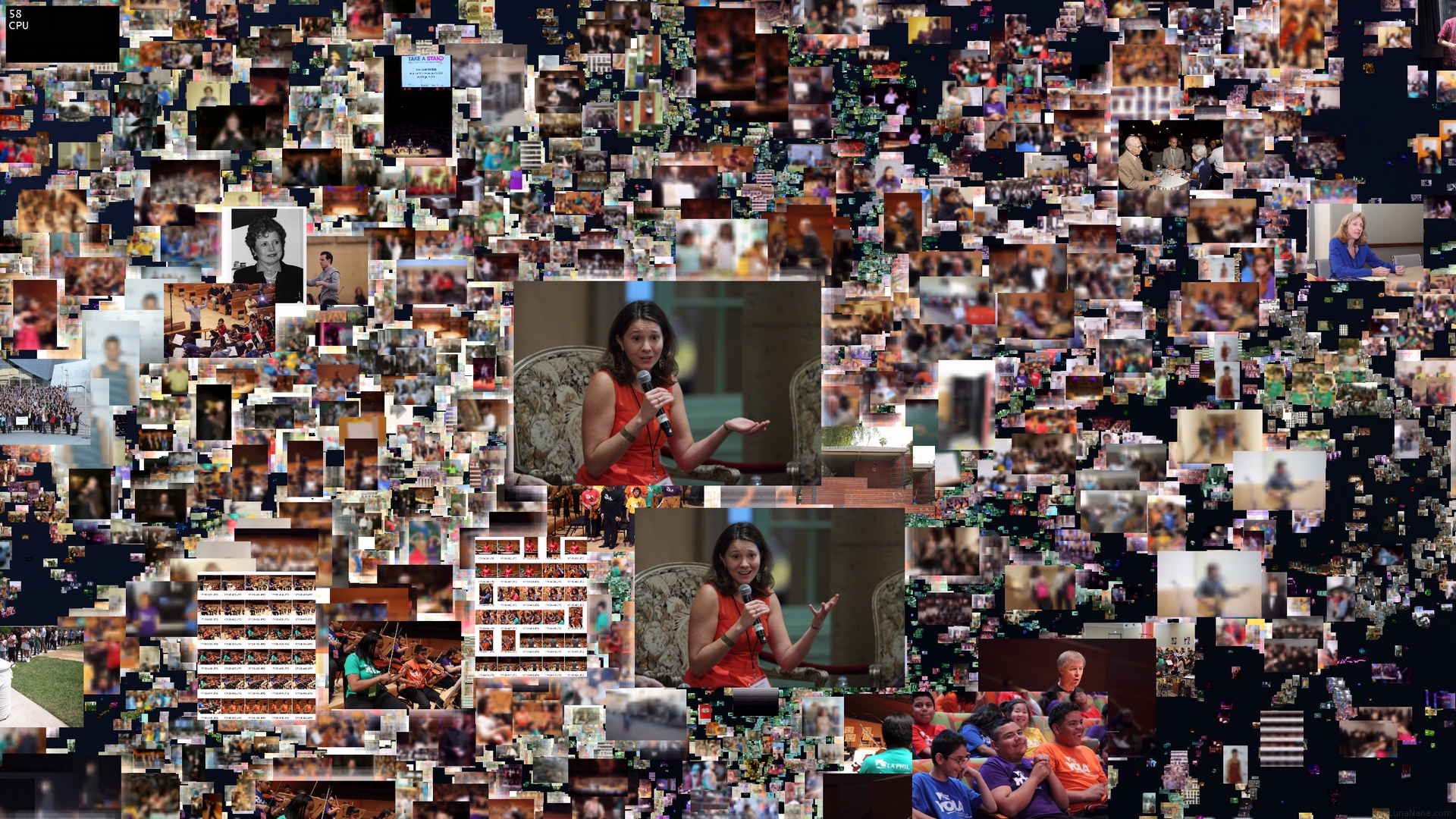
Mid Distance
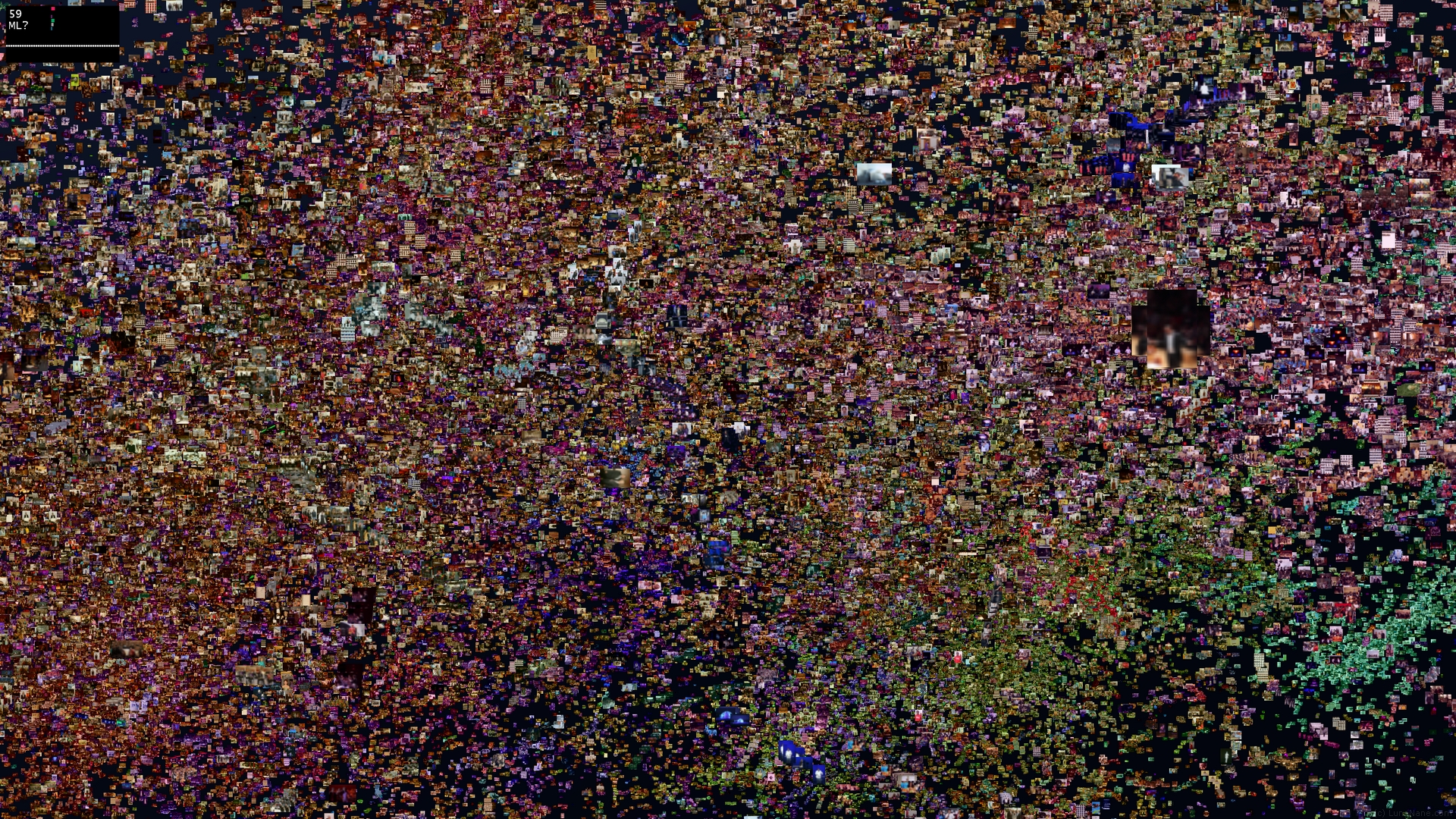
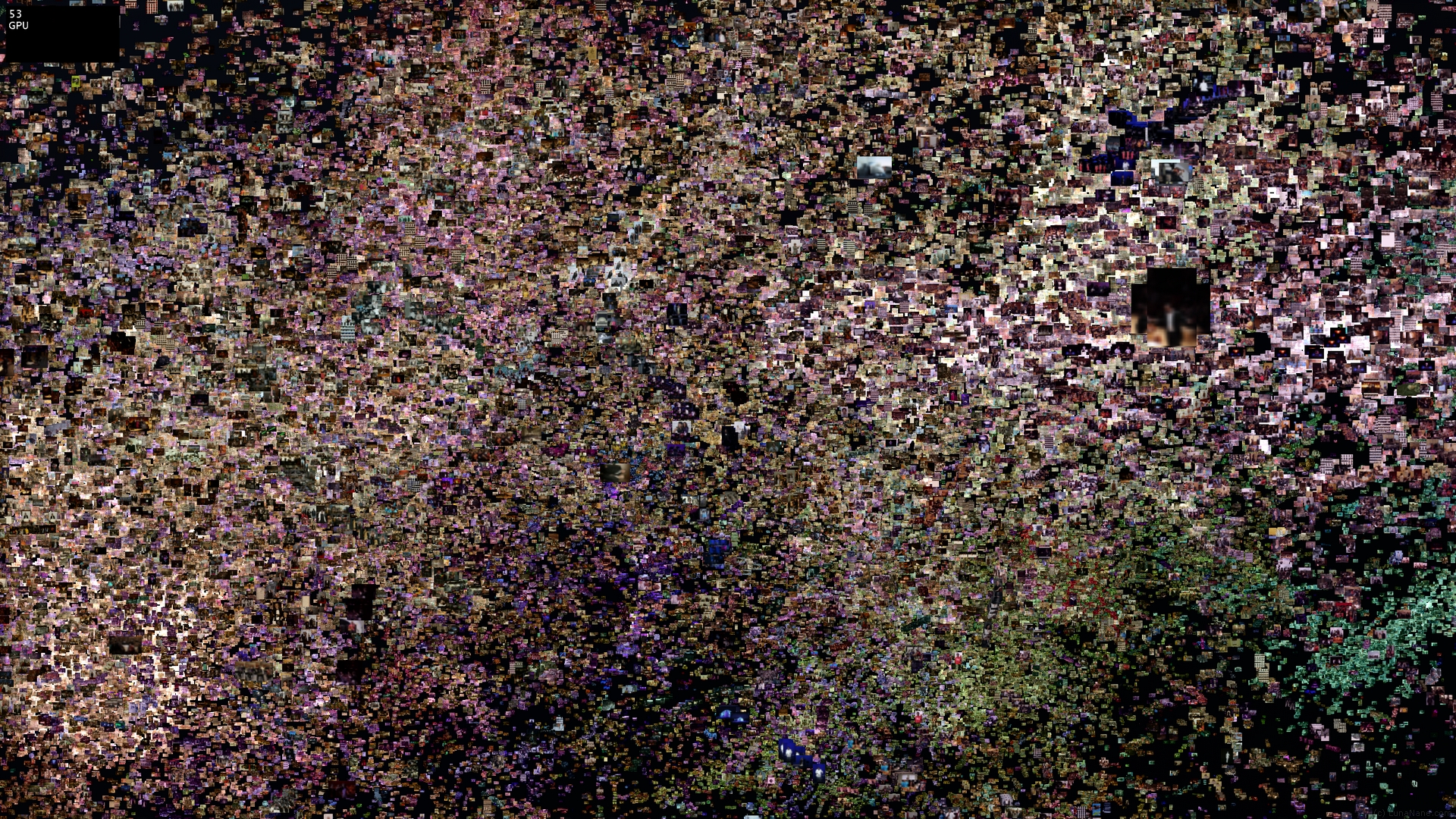
Far distance
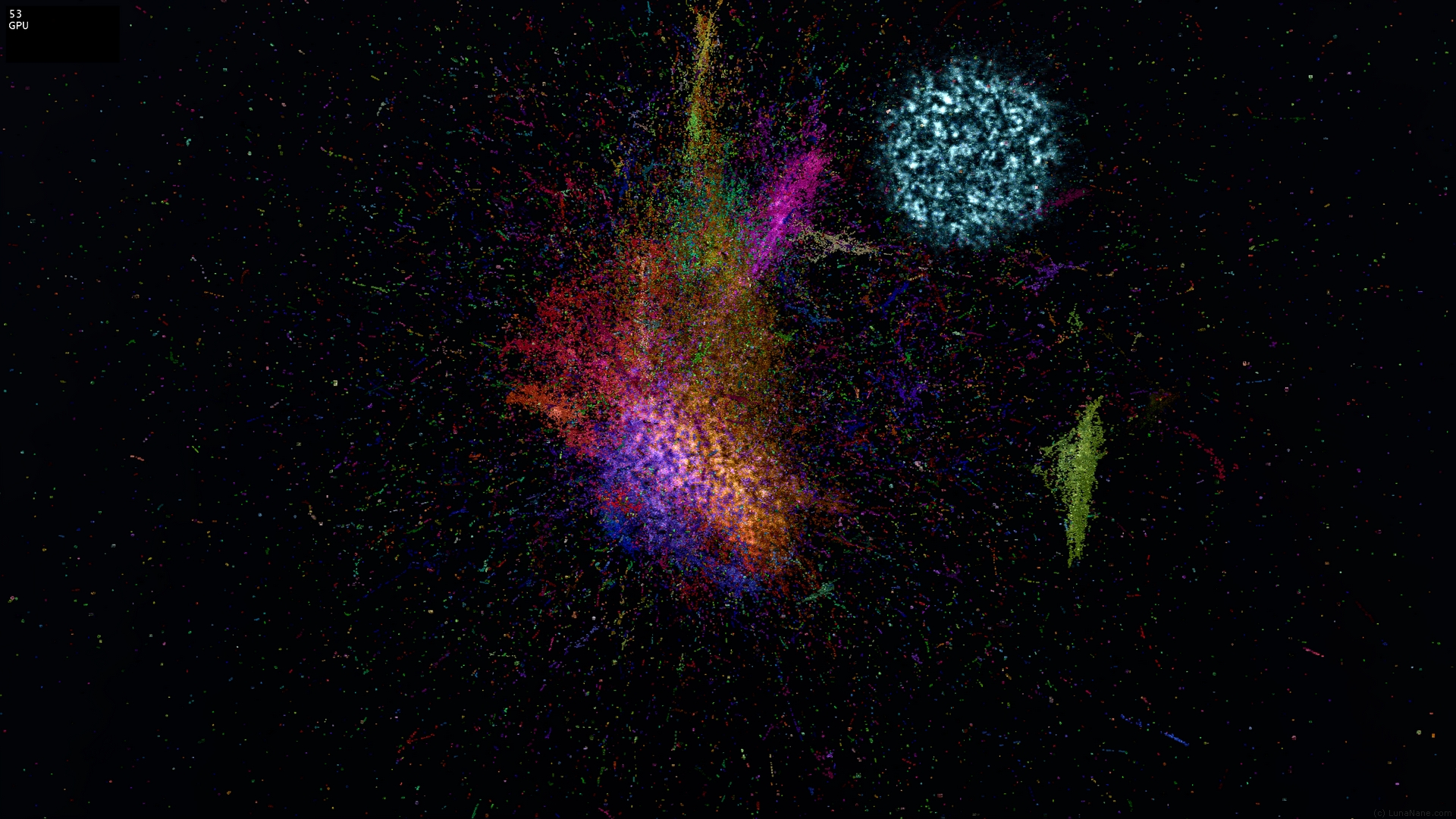
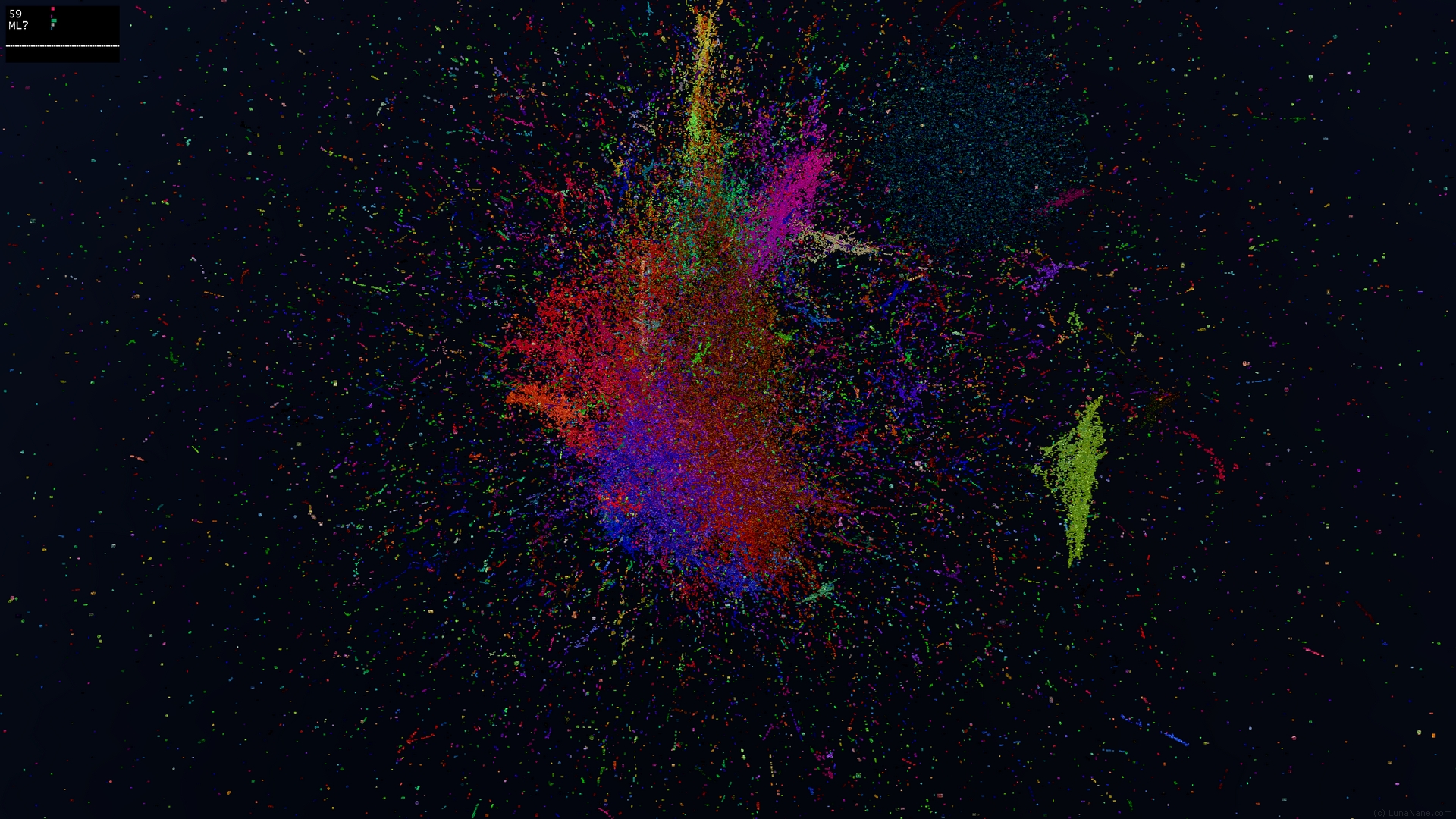
As you can see cluster and cloud topology are much better visible with the bright ambient occlusion.
Grayscale fade and DOF
Furthermore I figured out that it increases foreground visibility a lot if the images are fading into gray scale versions of them self the further they are away from the camera.
This is especially notable when Depth of Field is added. Then the blurred background doesn't get a muddy color that interferes with the foreground, but gently shows the far away topology as a grayscale blurred image.
